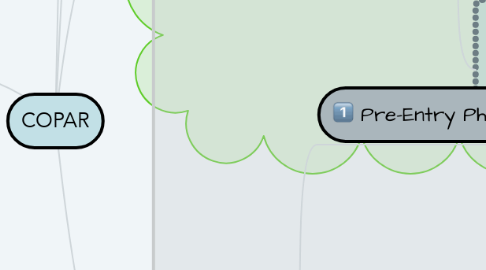
1. By: Danela Lungub
2. Stands for "Community Organizing Participatory Action Research"
2.1. It aims to encourage the poor to participate and be politically responsive to the community
3. 1994 National Rural Conference states that COPAR is a...
3.1. A collective, participatory, transformative, liberative, sustained and systematic process of building people’s organizations by mobilizing and enhancing the capabilities and resources of the people for the resolution of their issues and concerns towards effecting change in their existing oppressive and exploitative conditions
3.2. Importance
3.2.1. It is an essential tool for community development and people empowerment because it helps in community participation to development activities
3.2.1.1. prepares the people to take over the management of a development programs in the future
3.2.1.1.1. It highlights community participation and involvement and the mobilization of community resources for community services.
4. Principles
4.1. People especially the most oppressed, exploited and deprived sectors are open to change, have the capacity to change and are able to bring about change.
4.1.1. COPAR should be based on the interest of the poorest sector of the community.
4.1.1.1. COPAR should lead to a self-reliant community and society.
5. Phases
5.1. Pre-Entry Phase
5.1.1. Initial phase of the process where the organizer looks for communities to serve and help
5.1.1.1. preparation of the institution
5.1.1.1.1. site selection
5.1.1.1.2. training of faculty and students
5.2. Entry Phase
5.2.1. Determines which strategies for organizing would be fit to the chosen community. Success of the activities depend on how much the community organizers has integrated with the community
5.2.1.1. Integration
5.2.1.1.1. Establishing rapport with the people in continuing effort to imbibe community life
5.3. Organization-building Phase
5.3.1. Entails the formation of more formal structure and the inclusion of more formal procedure of planning, implementing, and evaluating community-wise activities.
5.3.1.1. Community Health Organization (CHO)
5.3.1.1.1. Research Team Committee
5.4. Sustenance and Strengthening Phase
5.4.1. Occurs when the community organization has already been established and the community members are already actively participating in community-wide undertakings. At this point, the different committees setup in the organization-building phase are already expected to be functioning by way of planning, implementing and evaluating their own programs, with the overall guidance from the community-wide organization.
5.4.1.1. Training of CHO for monitoring and implementing of community health program
5.4.1.1.1. Identification of secondary leaders
